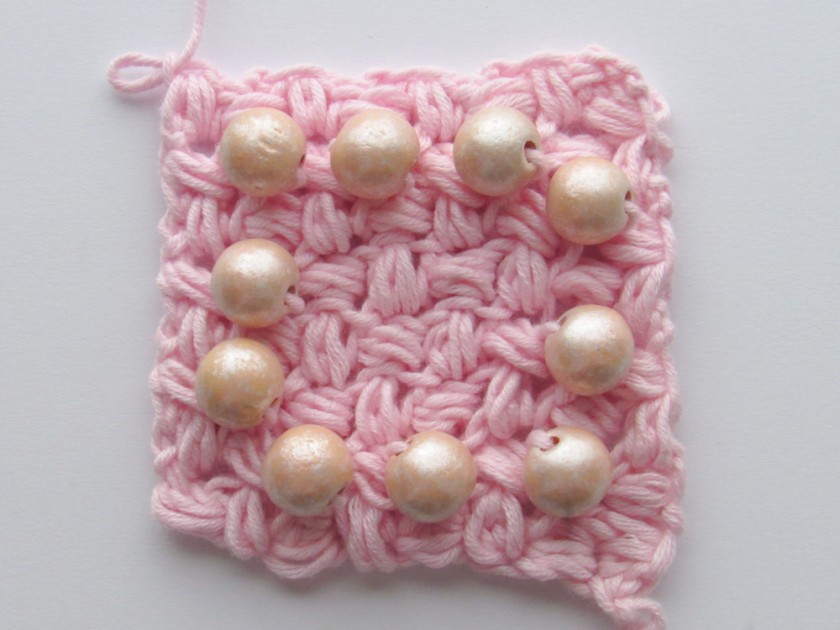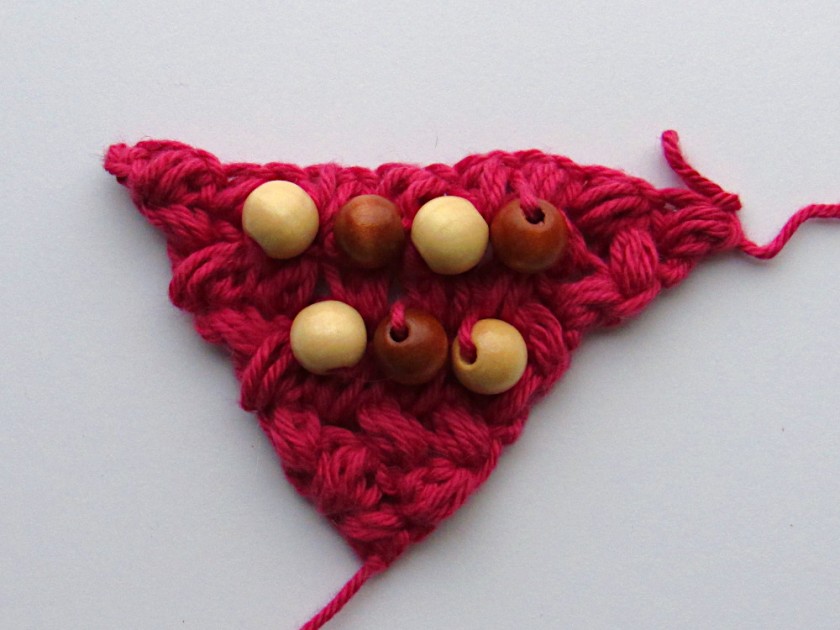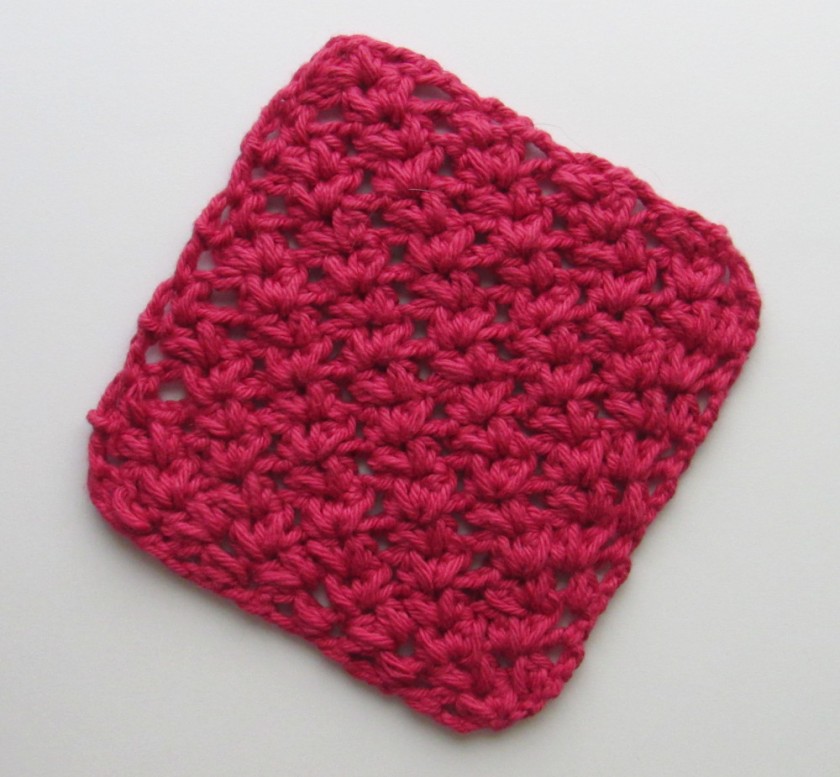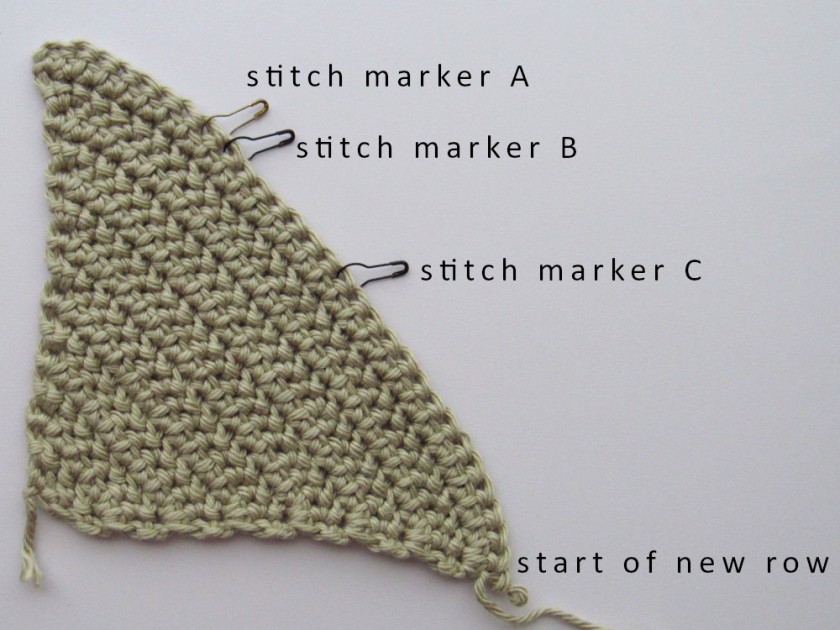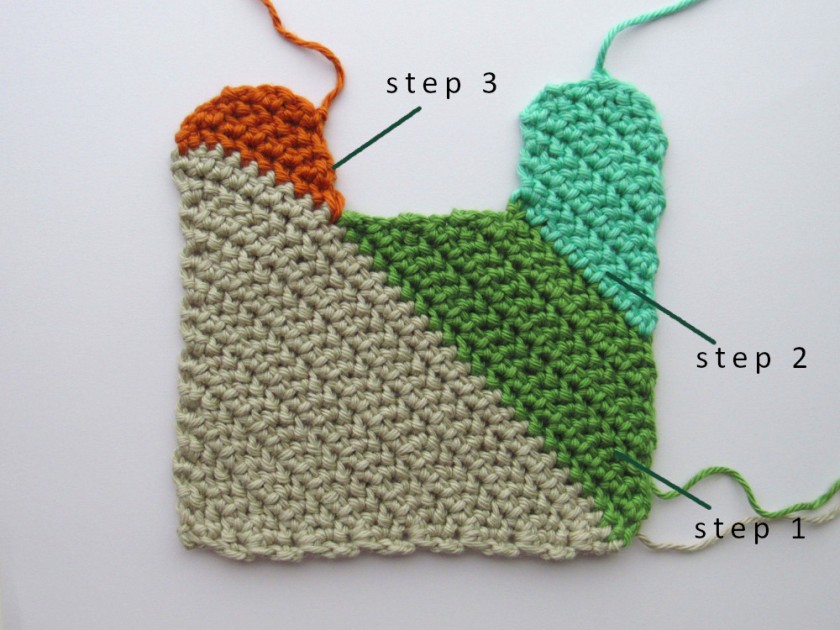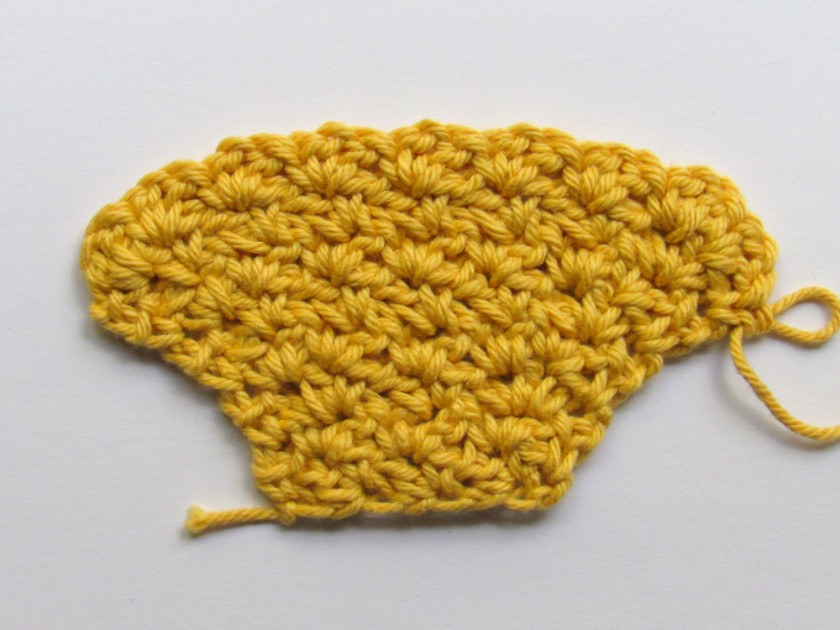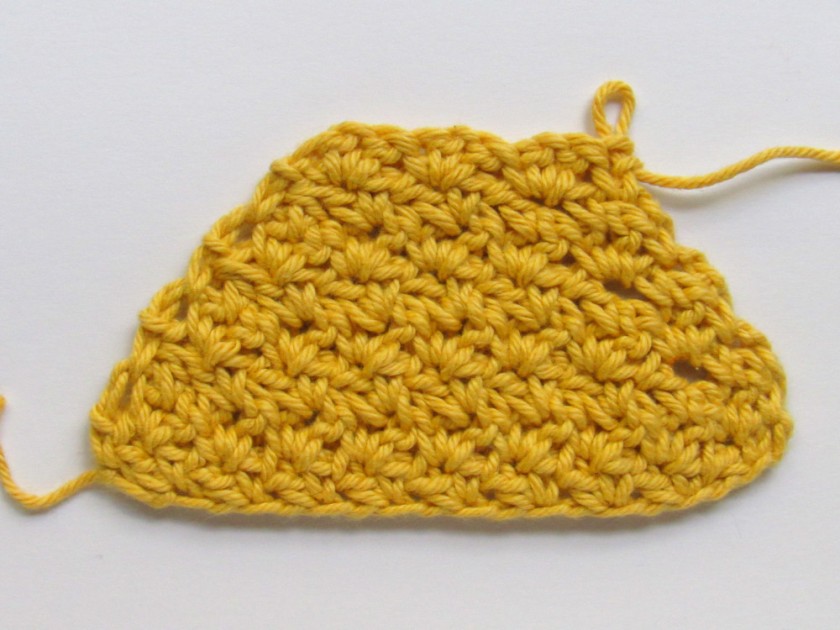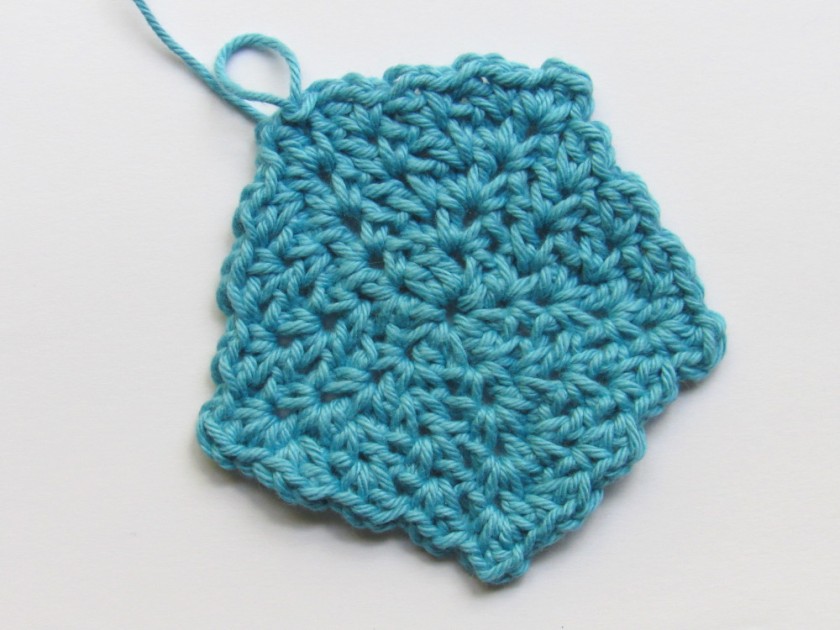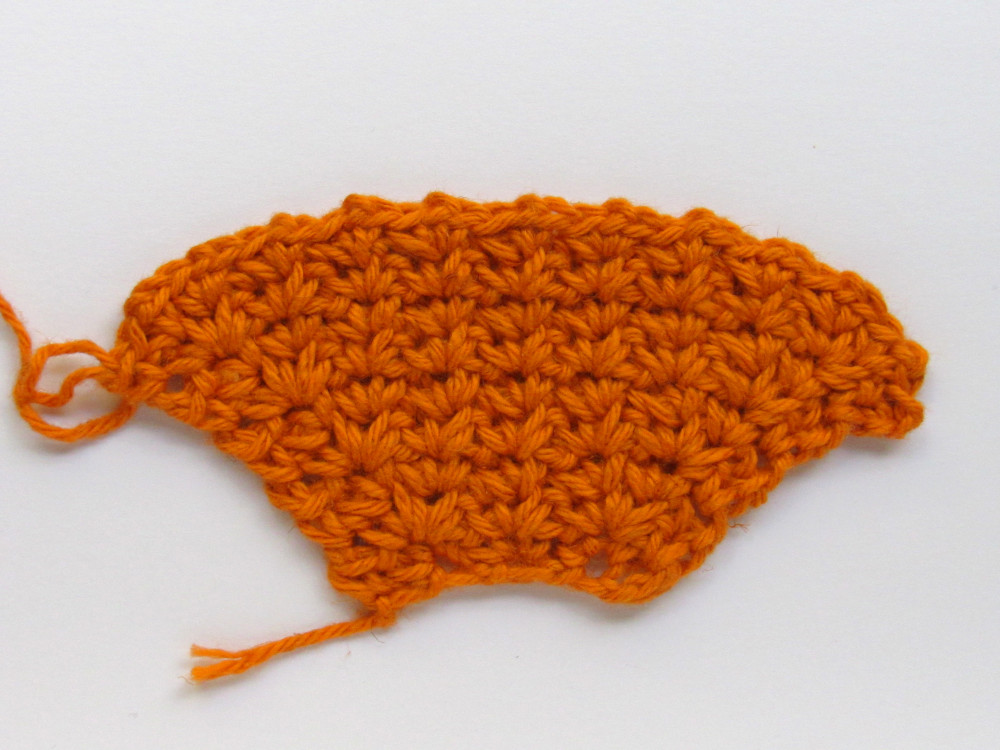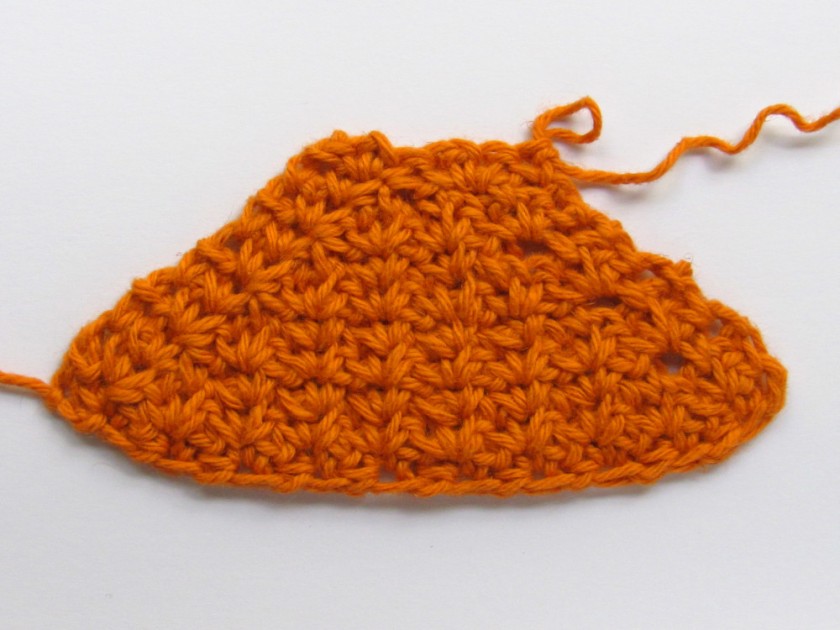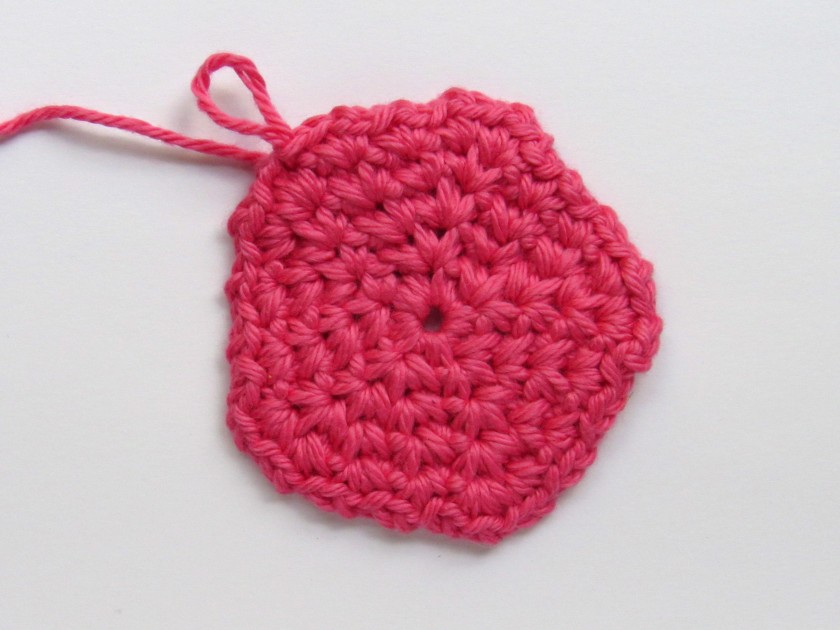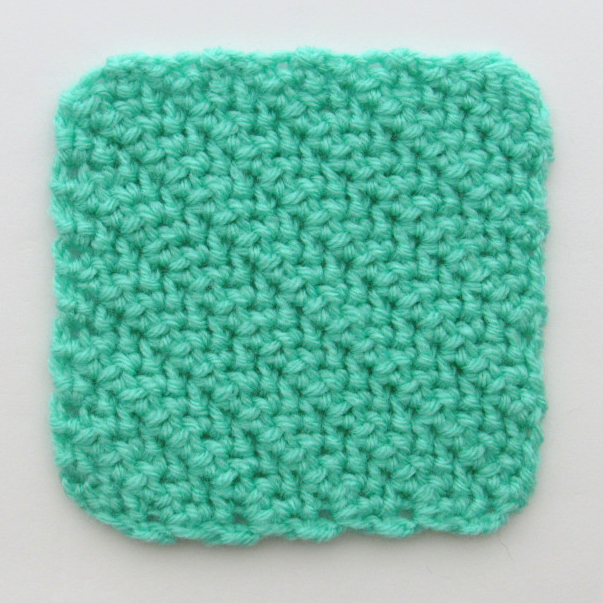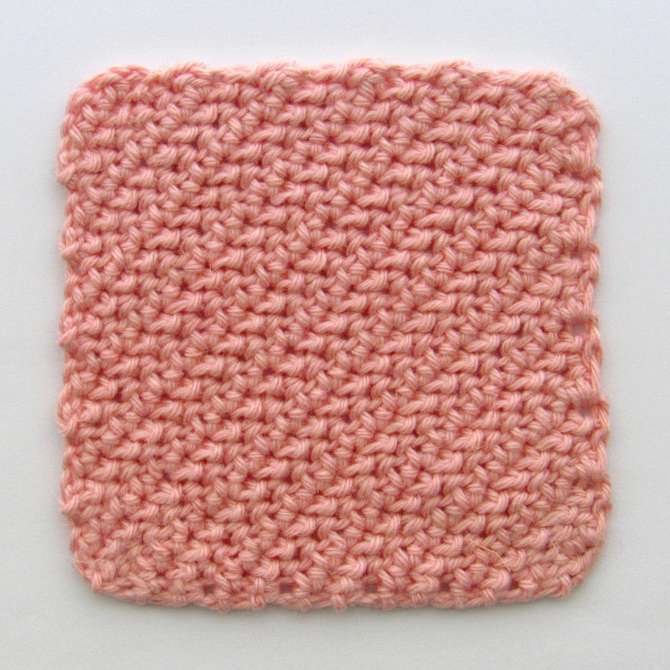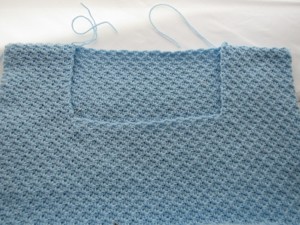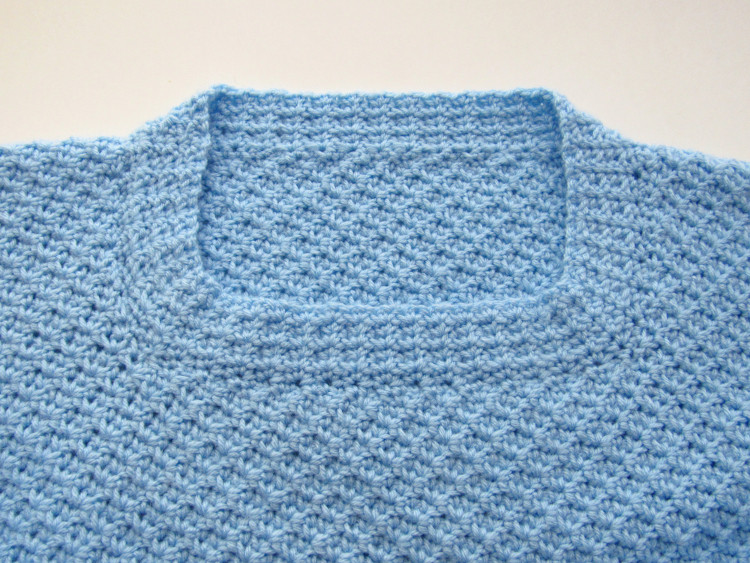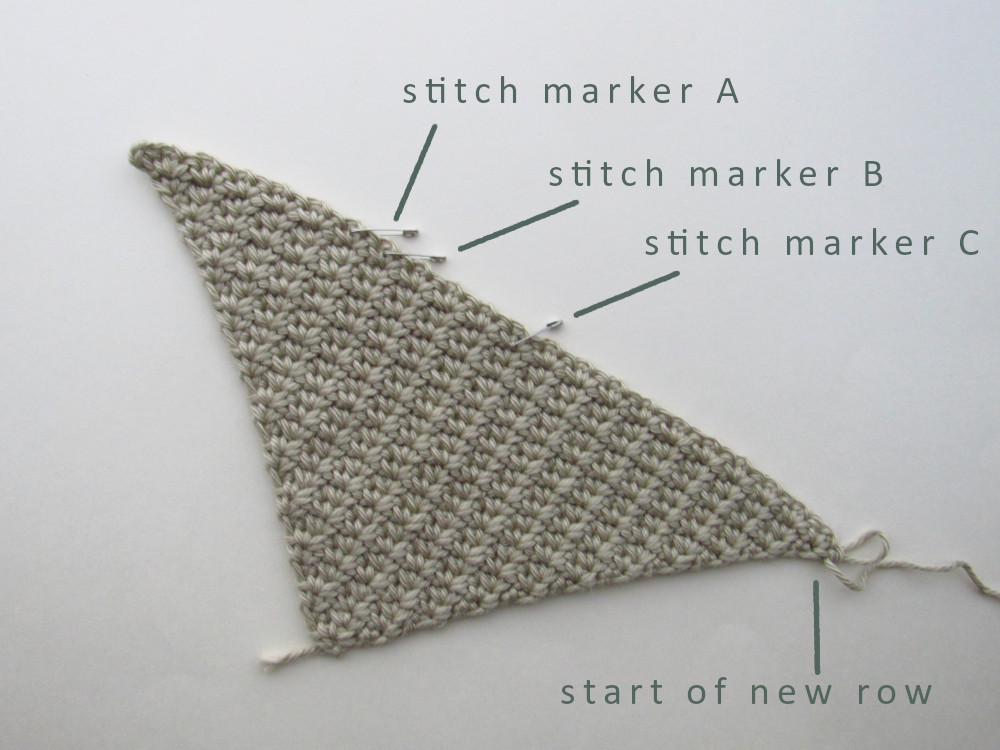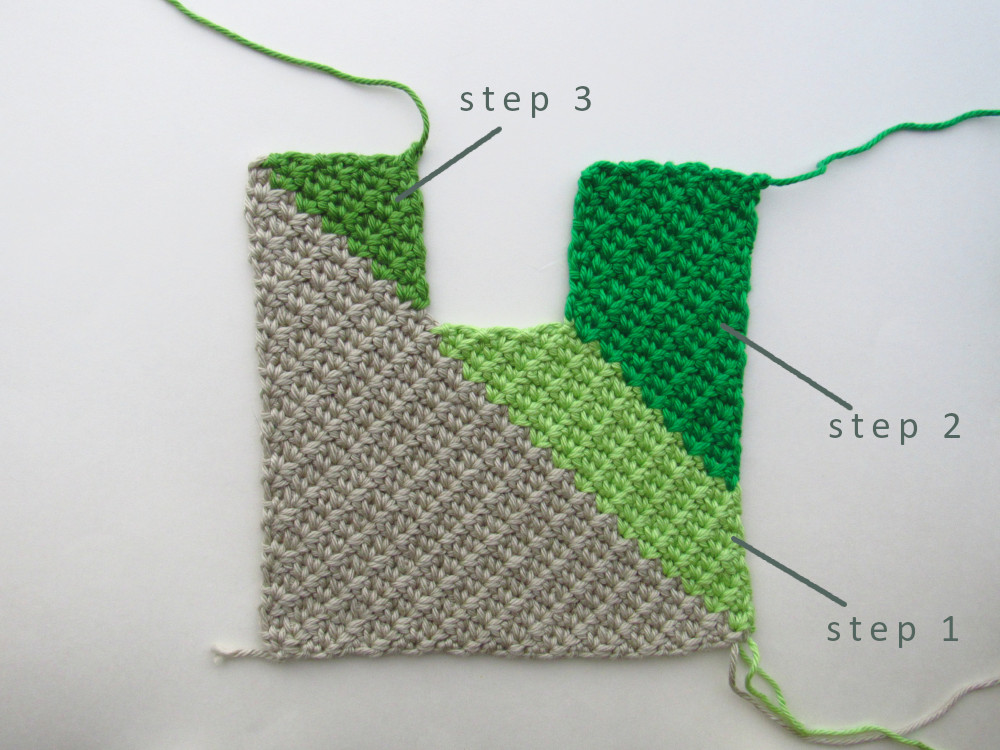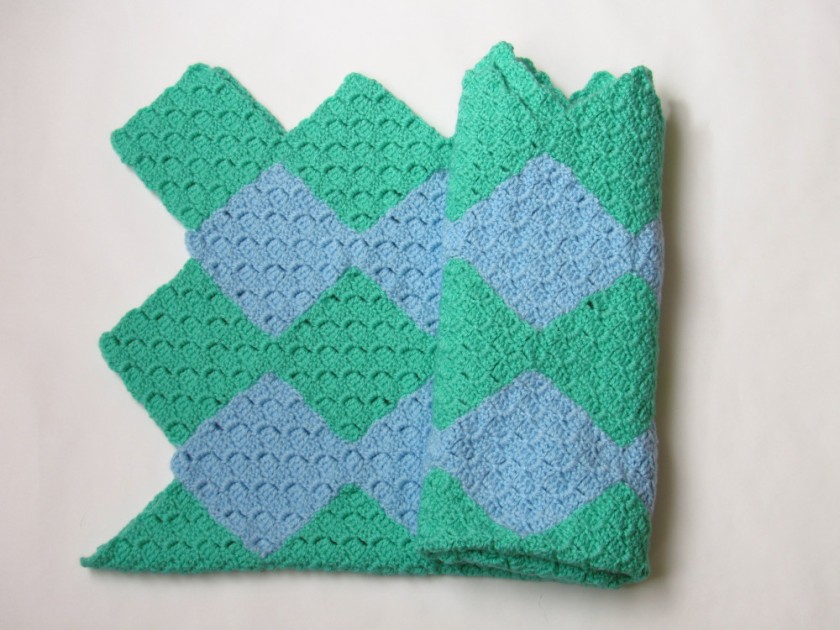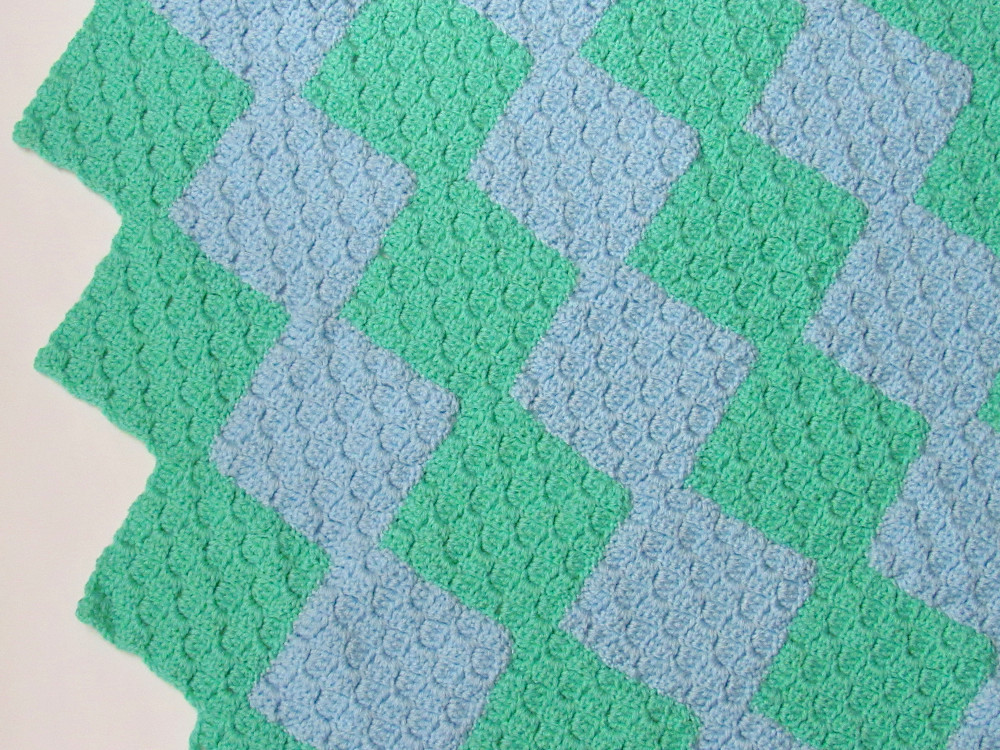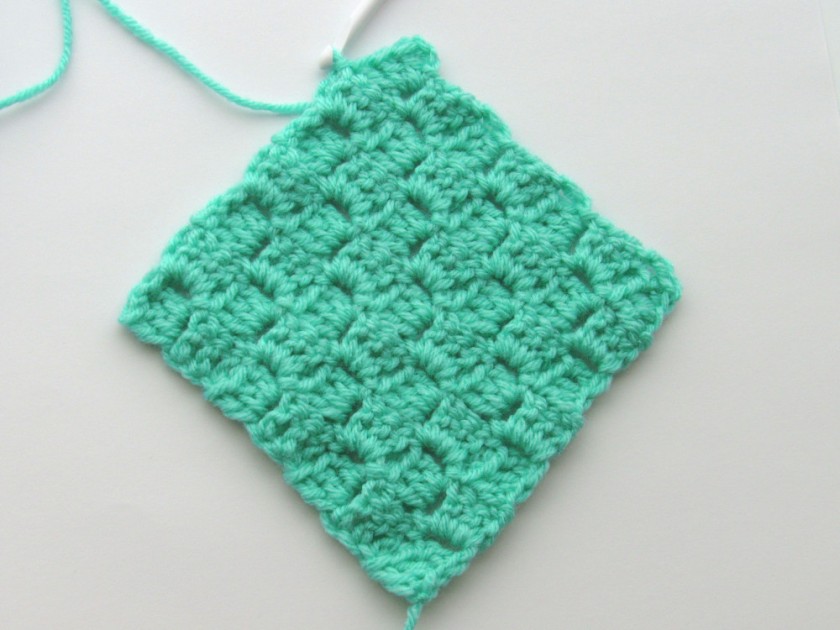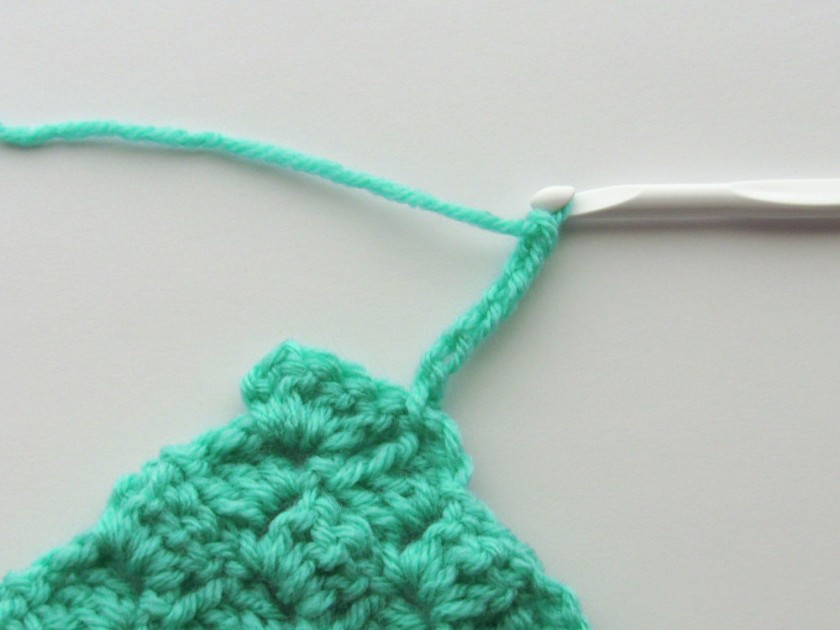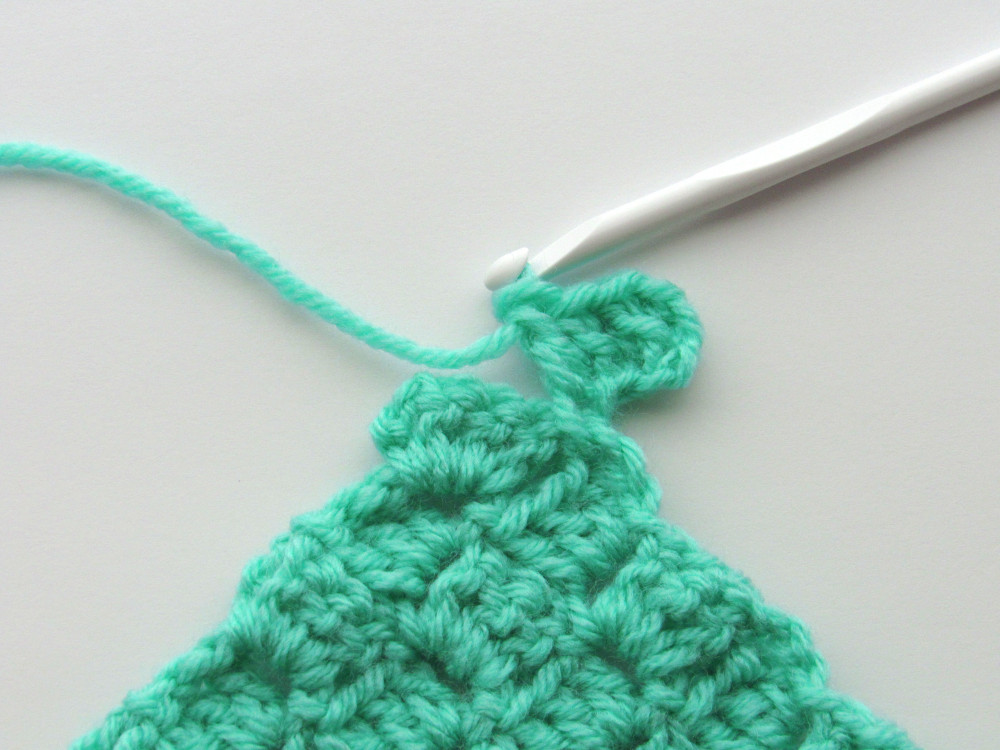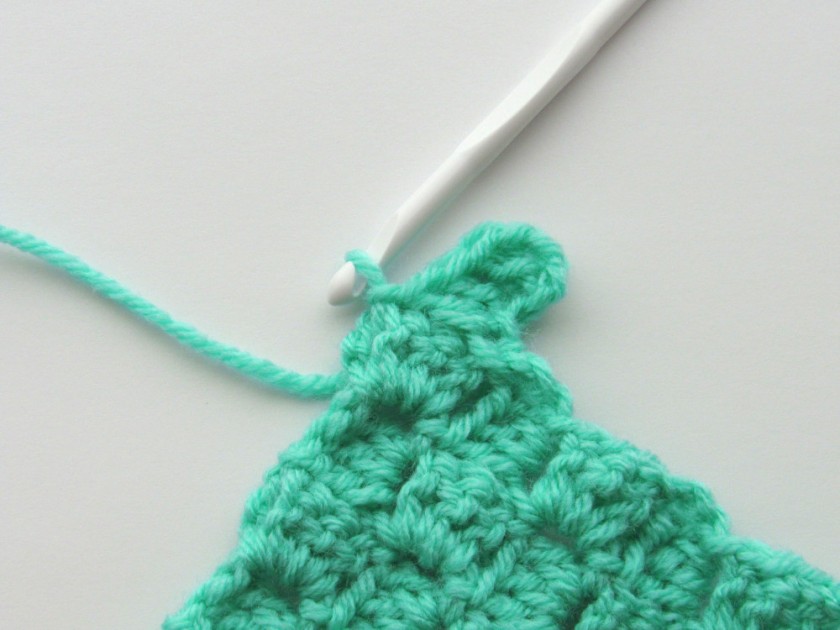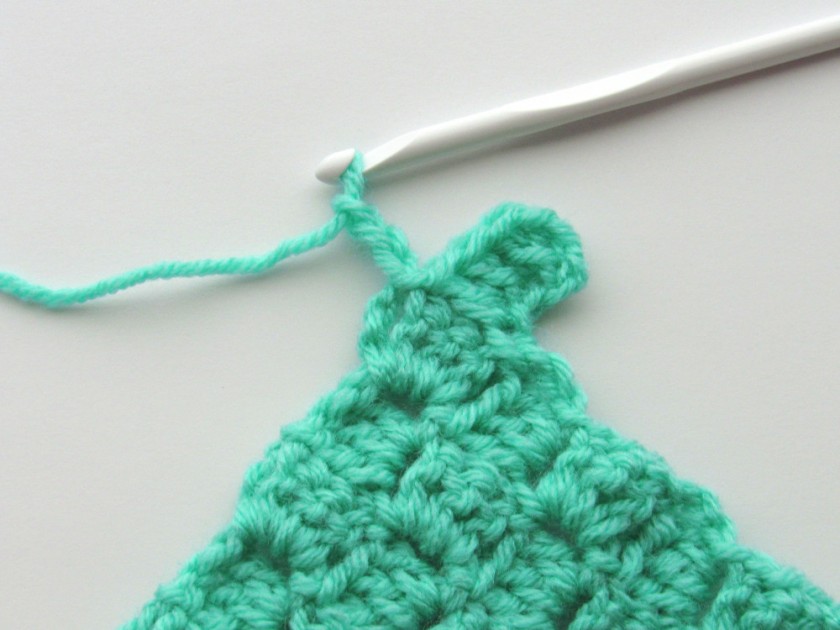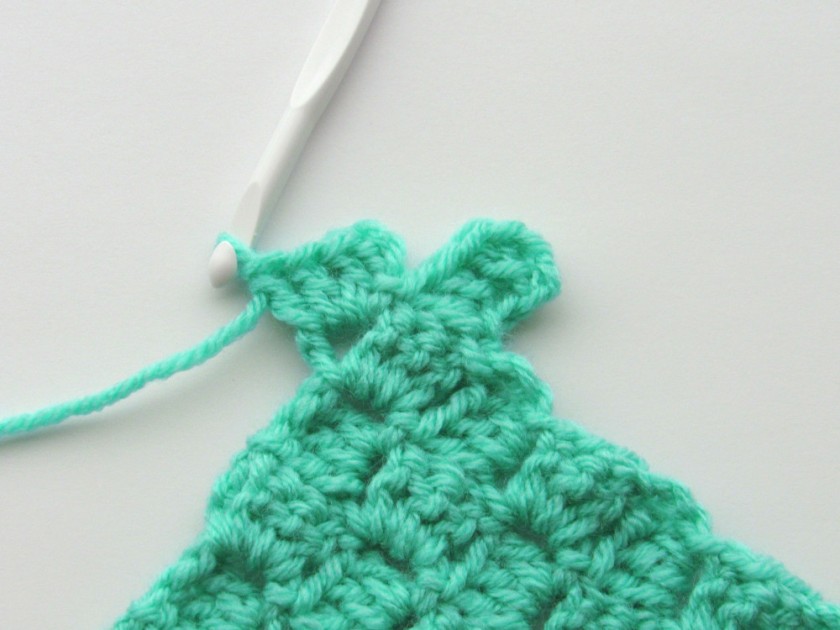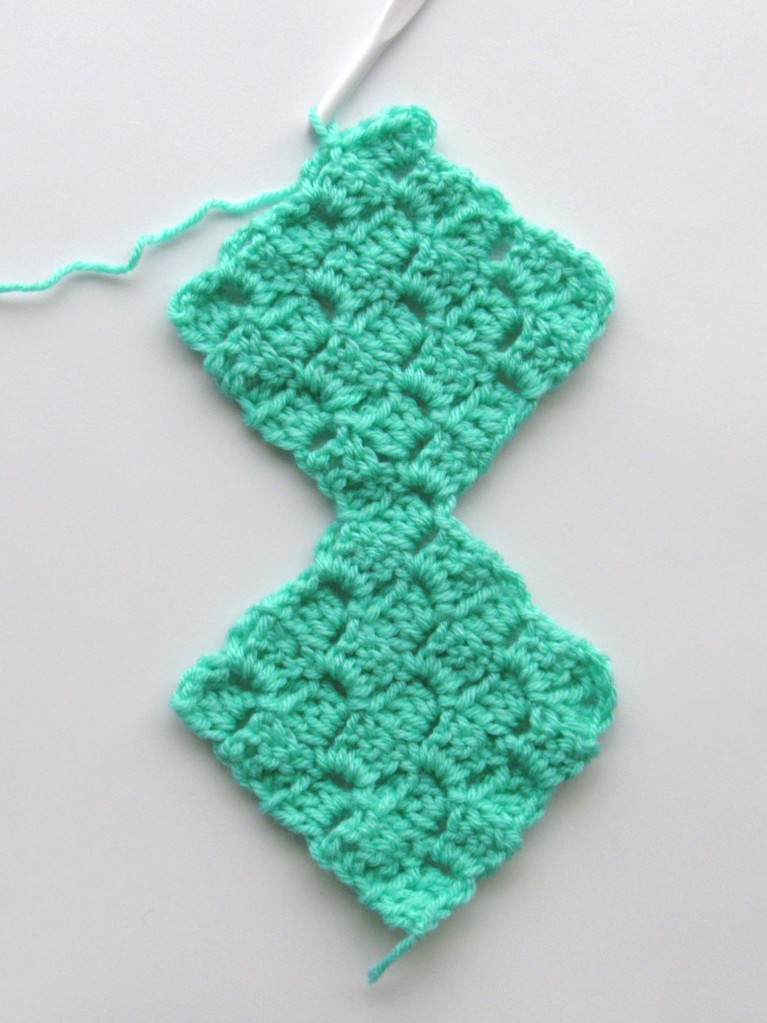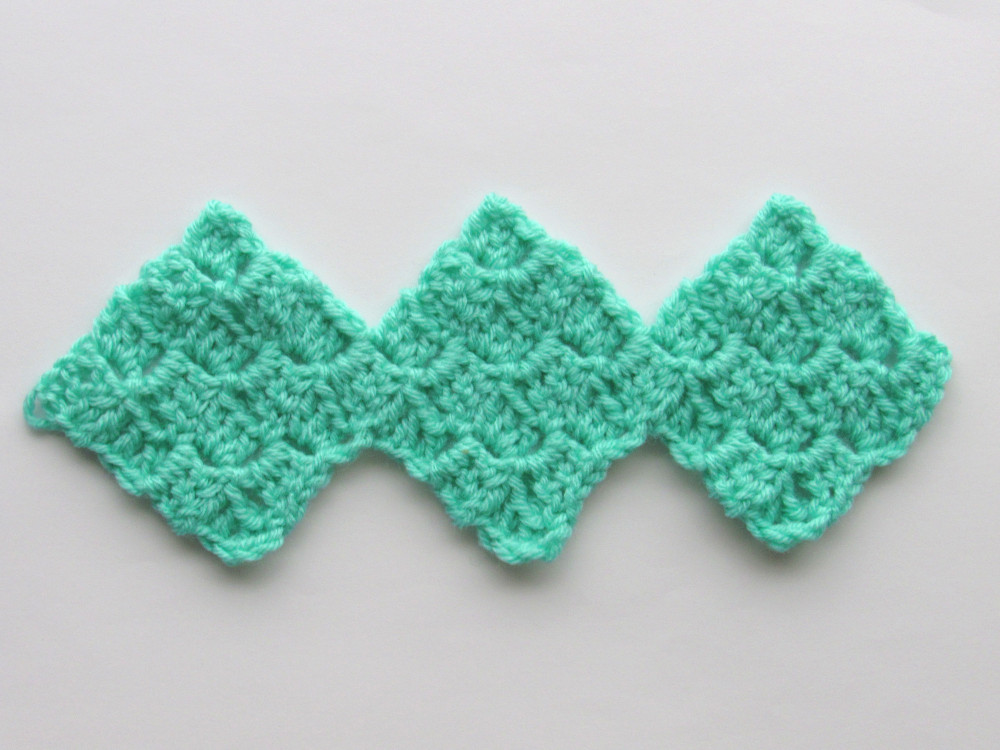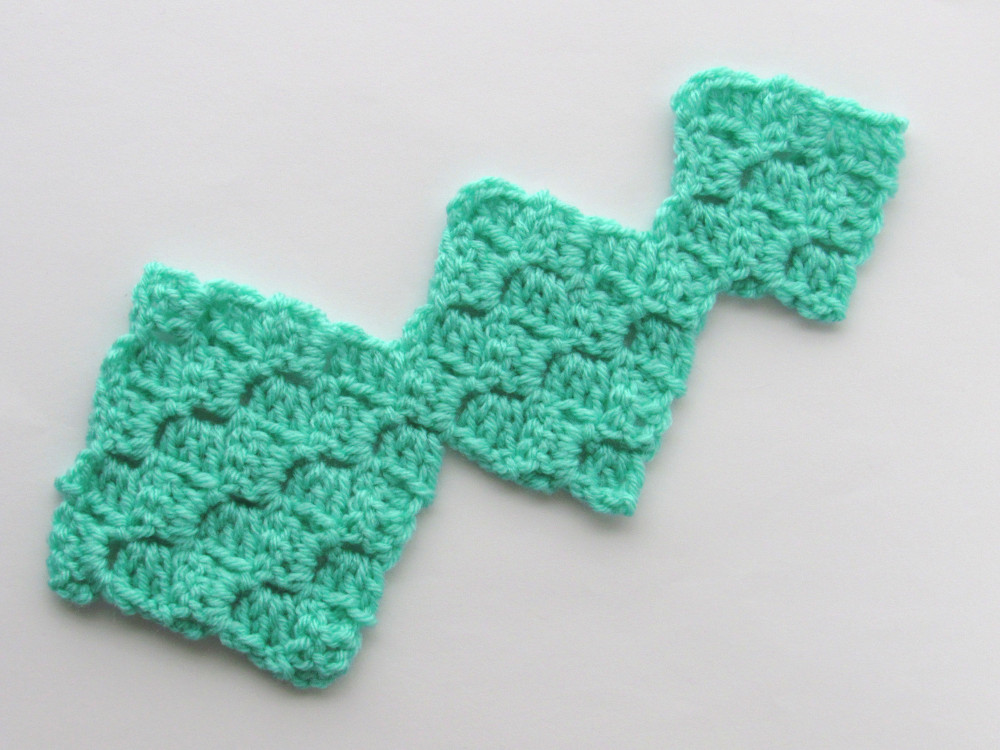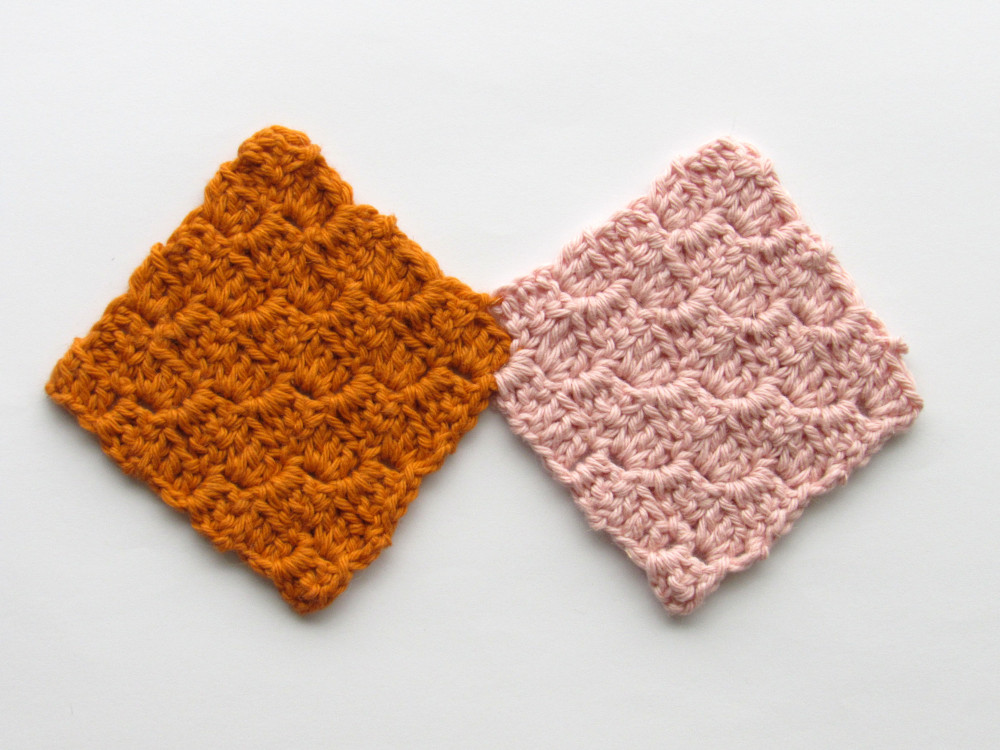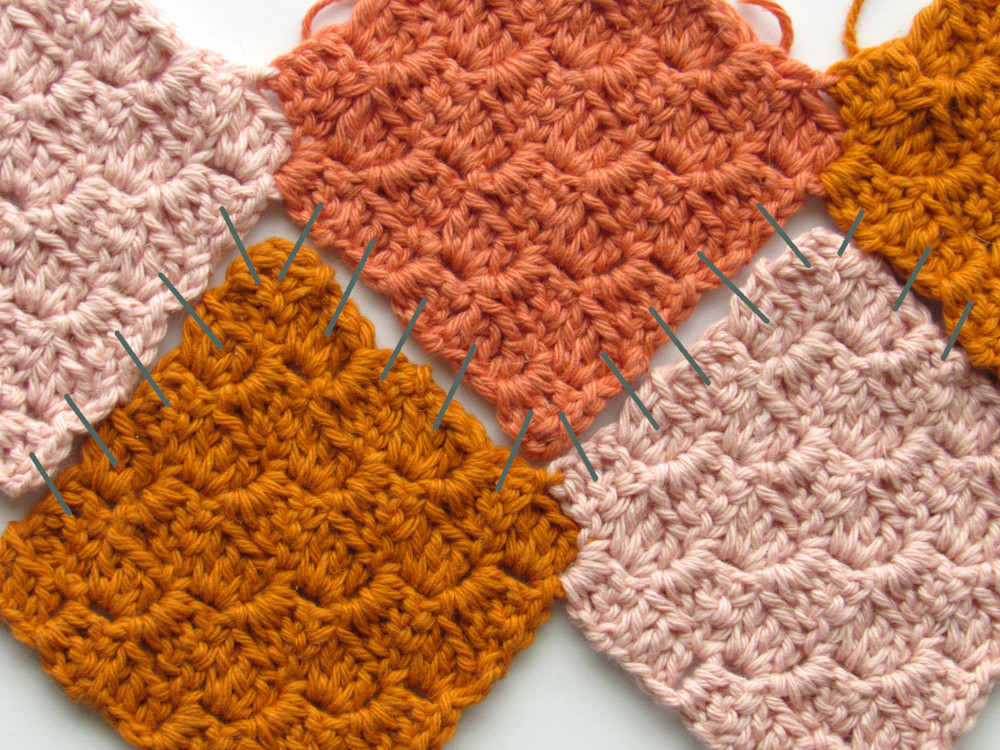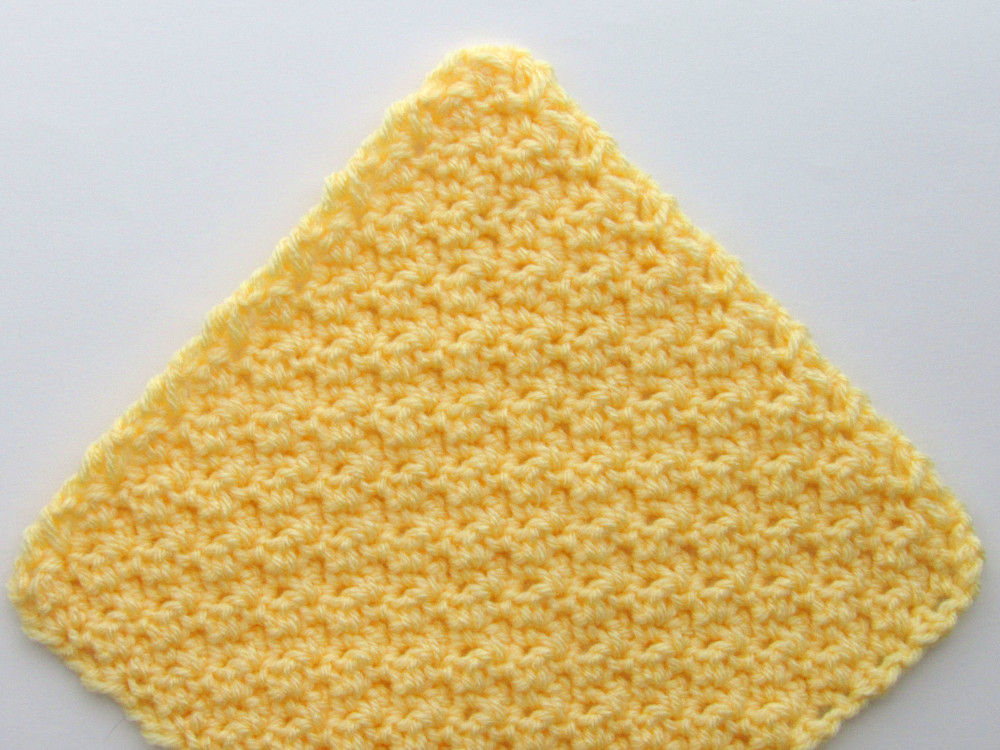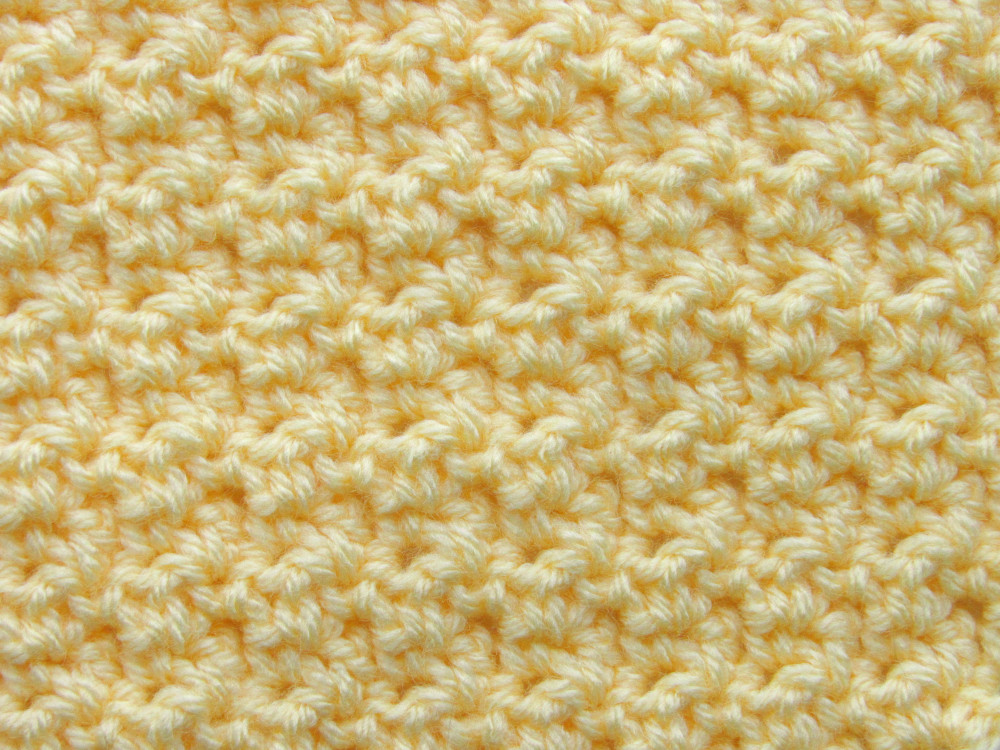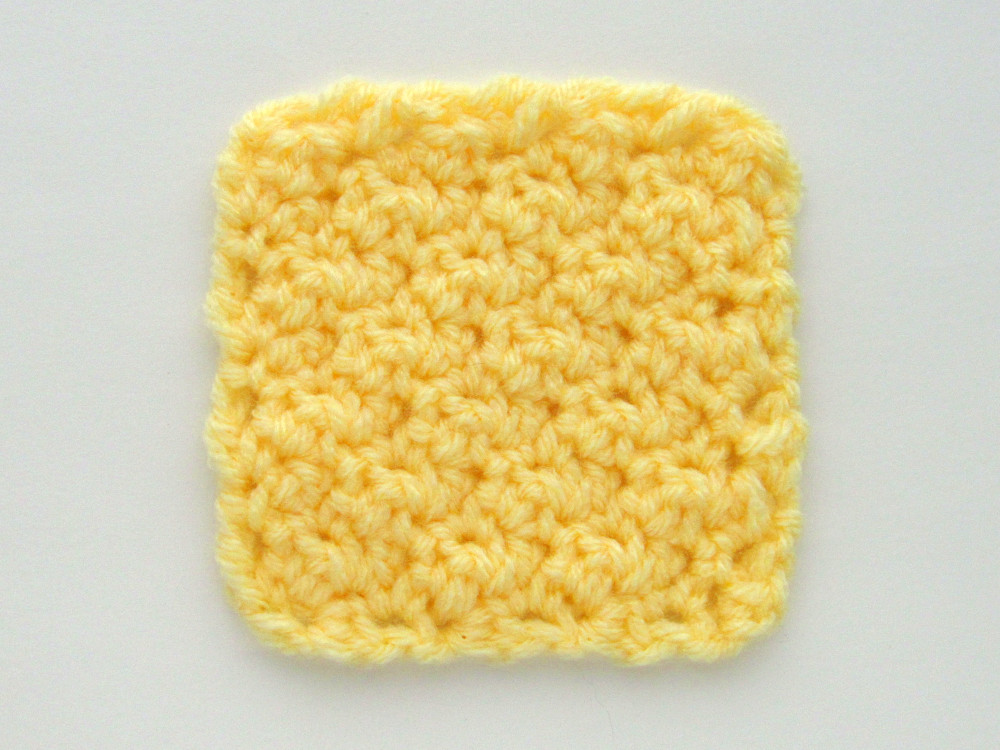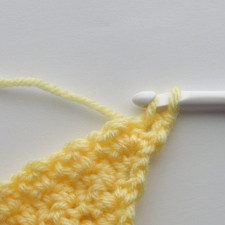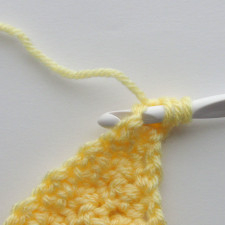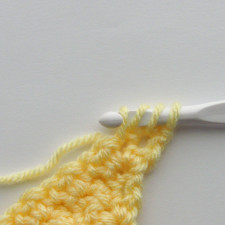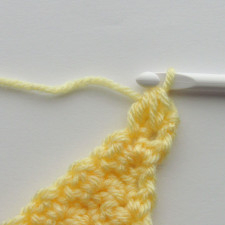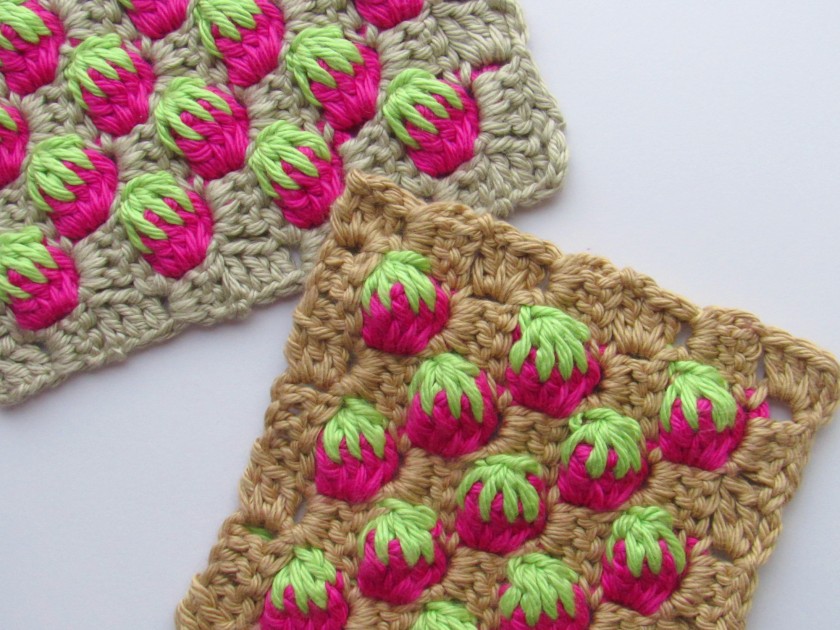
The C2C strawberry stitch is a C2C stitch variation that creates a crochet piece with strawberry stitches that have a slightly puffed up or raised texture. Every row of the pattern starts and ends like a regular C2C crochet project by making a set of (ch 3, 3 dc) stitches. In between these starting stitches are either rows of (ch 3, 3 dc) sets or rows of strawberry stitches.
For this tutorial, the strawberry stitch is a modified popcorn stitch. It involves making a ch-3 space that will be worked in on the next row and a popcorn stitch with a cap. Color B is used for both the ch-3 and popcorn stitch and Color C is used for the strawberry cap. Color A is not used in the strawberry stitch itself, but is picked up at the end to make a slip stitch in the next ch-3 space.
Below are written instructions for how to make a C2C strawberry stitch square. You can favorite it on ravelry here. For a pdf version with photos and instructions for making a rectangle, check out the etsy listing here.
Materials needed:
Three (3) colors of yarn in the same weight:
Color A: any color other than green and red
Color B: a red color
Color C: a green color
Any hook size
Yarn needle to weave in end
The yarns used in this tutorial are Knit Picks Shine Worsted in the following colors:
Color A: Willow for Sections One and Two, Platinum for Section Three
Color B: Cosmopolitan
Color C: Green Apple
The hook size used with these yarns is G.
Pattern Abbreviations (in US terms):
ch: chain stitch
st/sts: stitch/stitches
sl st: slip stitch
ch- space: space made by chain stitches from a previous row
dc: double crochet stitch
strawberry: strawberry stitch (instructions for how to make in tutorial notes)
* * : repeat instructions in between asterisks as often as indicated
( ) : stitches in between ( ) are worked in the same stitch
How to make a C2C strawberry stitch:
Step 1: After making a sl st in the ch-3 space with color A, switch to
Color B and chain 3.
Step 2: With Color B, make a popcorn stitch.
1. Make 5 dc in the same ch-3 space.
2. Remove your hook from the last dc and insert it in the first dc of the set.
3. From the back, insert your hook into the loop from the fifth dc.
4. Pull the loop through the back of the first dc to the front and ch 1 to secure the popcorn stitch.

Step 3: With Color C, make the cap. When pulling up loops between stitches, insert your hook towards the bottom of the stitches.
1. Pull up a loop with Color C.
2. Insert your hook between the first and second dc of the popcorn stitch and pull up a loop (two loops on the hook).
3. Yarn over, insert your hook between the second and third dc of the popcorn stitch and pull up a loop (four loops on the hook).
4. Yarn over, insert your hook between the third and fourth dc of the popcorn stitch and pull up a loop (six loops on the hook).
5. Yarn over, insert your hook between the fourth and fifth dc of the popcorn stitch and pull up a loop. (eight loops on the hook).
6. Pull through all eight loops on the hook.
7. Switch to Color A and pull up a loop.
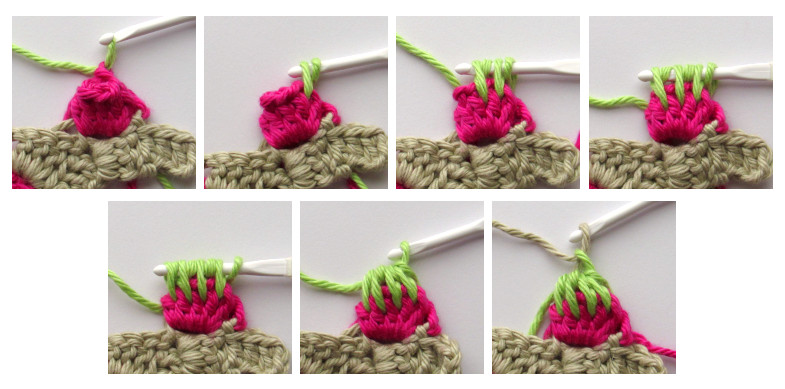
STARTING THE C2C STRAWBERRY SQUARE
Row 1: With Color A, ch 6 and make a dc in the 4th, 5th, and 6th chs from the hook.
Row 2: With Color A, turn your work and ch 6. Make a dc in the 4th, 5th, and 6th chs from the hook. Make a sl st in the ch-3 space from the previous row, ch 3 and make 3 dc.
Row 3: With Color A, turn your work and ch 6. Make a dc in the 4th, 5th, and 6th chs from the hook. Make a sl st in the ch-3 space from the previous row, switch to Color B and ch 3. With Colors B and C, make a strawberry. Switch to Color A and sl st in the last ch-3 space, ch 3 and make 3 dc.
Row 4 (Repeat Row): With Color A, turn your work and ch 6. Make a dc in the 4th, 5th, and 6th chs from the hook. Make a sl st in the first ch-3 space from the previous row, ch 3 and make 3 dc. *Make a sl st in the next ch-3 space, ch 3 and make 3 dc.* Repeat * * for the rest of the ch-3 spaces of the row.
Row 5 (Repeat Row): With Color A, turn your work and ch 6. Make a dc in the 4th, 5th, and 6th chs from the hook. Make a sl st in the first ch-3 space, switch to Color B and ch 3. With Colors B and C make a strawberry. *With Color A, make a sl st in the next ch-3 space, switch to Color B and ch 3. With Colors B and C make a strawberry.* Repeat * * until you reach the last ch-3 space. Switch to Color A and sl st in the last ch-3 space, ch 3 and make 3 dc.
Repeat Rows 4 and 5 until you reach the size you want.
CLOSING YOUR SQUARE
Your starting row in this section depends on your last row of Section One. If the last row of Section One is a Row 4, start with Row 1 then move to Row 2. If the last row of Section One is a Row 5, start with Row 2 then move to Row 1.
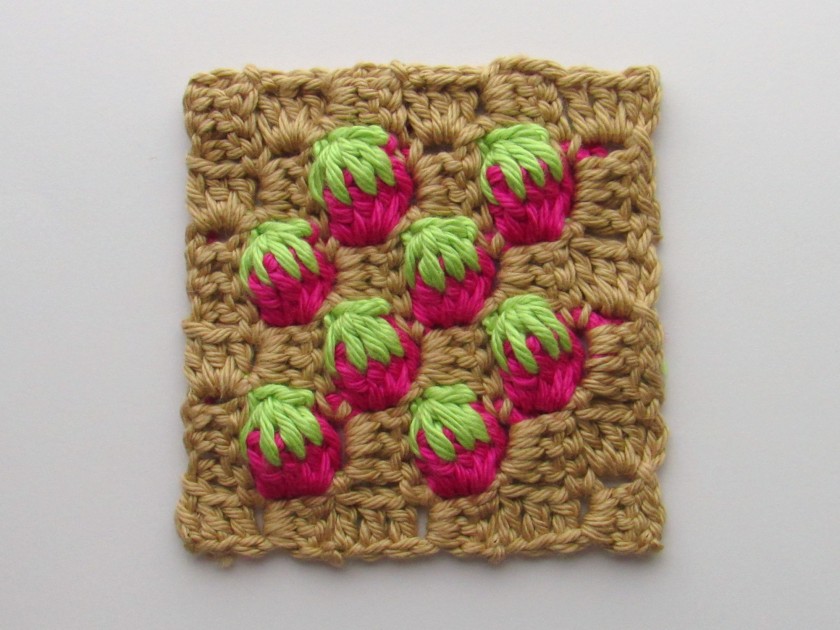
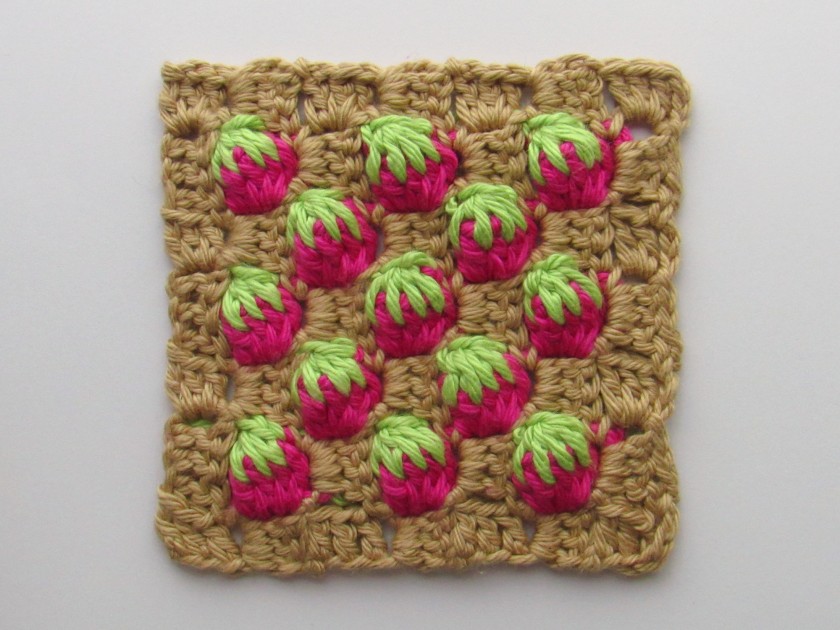
Row 1 (Repeat Row): With Color A, turn your work, ch 1 and make a sl st in each dc to the first ch-3 space. Sl st in the ch-3 space, ch 3 and make 3 dc. *With Color A, make a sl st in the next ch-3 space, switch to Color B and ch 3. With Colors B and C, make a strawberry.* Repeat * * until you reach the last 2 ch-3 spaces. Switch to Color A and make a sl st in the next ch-3 space, ch 3 and make 3 dc. Move to the last ch-3 space and make a sl st.
Row 2 (Repeat Row): With Color A, turn your work, ch 1 and make a sl st in each dc to the first ch-3 space. Sl st in the ch-3 space, ch 3 and make 3 dc. *Make a sl st in the next ch-3 space, ch 3 and make 3 dc.* Repeat * * until you reach the last ch-3 space. Make a sl st in the last ch-3 space.
Repeat Rows 1 and 2 until you complete the row with either three sets of (ch 3, 3 dc) stitches or two sets of (ch 3, 3 dc) with a strawberry between them. Move to Rows 3 and 4 to finish your square.
Row 3: With Color A, turn your work, ch 1 and make a sl st in each dc to the first ch-3 space. Sl st in the ch-3 space, ch 3 and make 3 dc. Make a sl st in the next ch-3 space, ch 3 and make 3 dc. Make a sl st in the last ch-3 space.
Row 4: With Color A, turn your work, ch 1 and make a sl st in each dc to the first ch-3 space. Sl st in the ch-3 space, ch 3 and make 3 dc. Make a sl st in the last ch-3 space.

